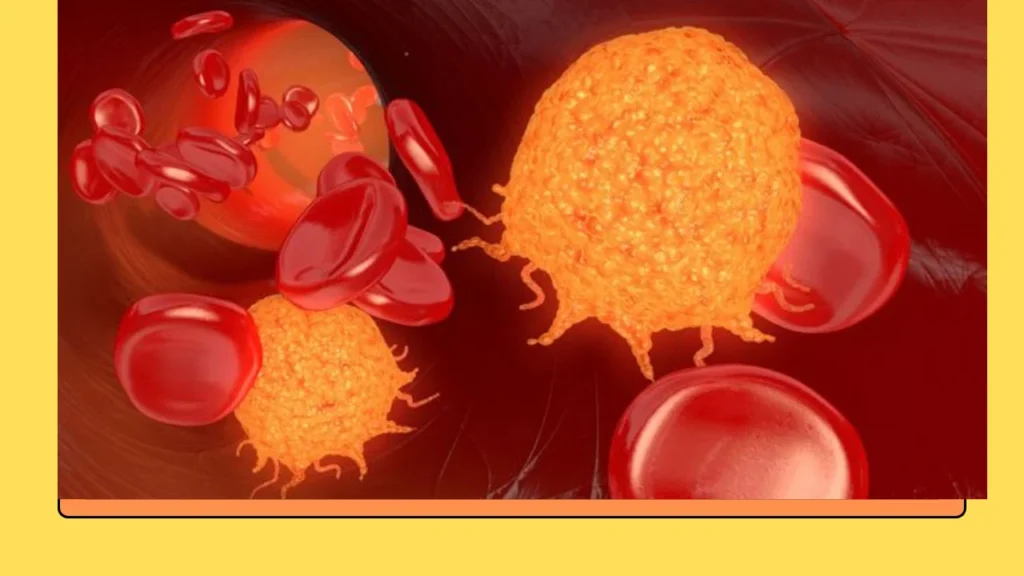1. White Blood Cells Are the Body’s Defense System
White blood cells (WBCs) are a critical part of your body’s immune system. Their main job is to protect you from infections caused by bacteria, viruses, fungi, and parasites. Think of them as the body’s personal army, constantly patrolling your bloodstream and tissues, ready to attack any invader they detect.
When a threat enters your body, WBCs are among the first to respond. They can recognize and destroy harmful organisms, remove dead or damaged cells, and help initiate the healing process. Without a strong and active network of white blood cells, even a small cut or a common cold could become life-threatening. In short, your WBCs are what stand between you and countless potential illnesses every day.

2. Different Types of White Blood Cells Have Unique Roles
Not all white blood cells are the same — each type has a specialized function, and together, they form a highly coordinated defense system:
- Neutrophils: These are the most common type of white blood cell and the first to arrive at the site of infection. They quickly engulf and destroy invading microbes through a process called phagocytosis.(1
- Lymphocytes: This group includes B cells and T cells. B cells produce antibodies that target specific invaders, while T cells directly kill infected cells or help control the overall immune response.
- Monocytes: Monocytes circulate in the blood and migrate into tissues where they mature into macrophages. These “big eaters” clean up dead cells and pathogens and also alert other WBCs to the presence of invaders.
- Eosinophils: These cells specialize in combating larger parasites like worms and also contribute to allergic reactions by releasing certain chemicals.
- Basophils: Although rare, basophils play a major role in allergic responses by releasing histamine and other chemicals that help mediate inflammation.
Each type of WBC is like a different kind of soldier, trained for a specific battle. Together, they form a complete and flexible defense system that can adapt to any threat.
3. White Blood Cells Are a Tiny Fraction of Your Blood
White blood cells are actually very rare passengers in your bloodstream. By number and volume they are vastly outnumbered by red blood cells. In a healthy adult, red cells make up about 40–45% of blood volume (the hematocrit), while white cells and platelets together form only about 1% In other words, for every white cell there are hundreds of red cells. This means that white cells account for only a tiny fraction (around 1%) of your total blood volume. even though they are few, each white blood cell has a powerful role in protecting you from infection.
4. Bone Marrow Is the Birthplace of White Blood Cells
All white blood cells begin life in the bone marrow, the soft, spongy tissue inside your bones. Bone marrow is a blood-cell factory: it contains special hematopoietic stem cells that divide and differentiate into every kind of blood cell. From this pool of stem cells, the body produces red cells, platelets, and the various white blood cells (neutrophils, lymphocytes, monocytes, etc.) . For example, a single stem cell might become a neutrophil or a lymphocyte, depending on the signals it receives. (Some cells like T-lymphocytes start in marrow and finish maturing in other organs like the thymus, but their origin is still the marrow.) Because marrow is constantly “turning over” blood cells, a healthy bone marrow is essential for a steady supply of new white cells.
5. Healthy White Blood Cell Counts Are Critical
Doctors pay close attention to your white blood cell count as a key measure of immune health. In adults, a count of roughly 4,000 to 11,000 white cells per microliter (μL) of blood is considered normal (White Blood Cell Count: Normal, High, and Low Counts). Staying within this range usually means your immune system is functioning well. Counts outside this range can be a warning sign: a very low count (called leukopenia) often indicates a weakened immune system, making infections more dangerous .A very high count (leukocytosis) usually means your body is fighting something – often an infection or inflammation – and it has ramped up production of white cells. In short, keeping your white blood cell count in the healthy range is critical, because too few or too many white cells can both signal a medical problem.
6. Most White Blood Cells Live Only a Few Days
White blood cells are hardworking but short-lived. Many types survive only briefly once released into the bloodstream. For example, neutrophils (which are the most common white cells) typically circulate for only a day or two before dying White blood cell . Other white cells also have limited lifespans. This rapid turnover is in stark contrast to red blood cells (which live around 120 days). Because most white cells “burn out” quickly, the body must constantly produce new ones to replace them. In other words, your bone marrow is continually churning out fresh white cells to replace those that die while fighting off germs.
7. White Blood Cells Can Move Beyond Blood Vessels
One of the remarkable abilities of white blood cells is that they are not confined to just traveling within the blood vessels. When there’s an infection or injury, they can move out of the bloodstream and enter tissues to fight threats directly. This process is called diapedesis. WBCs squeeze through the walls of capillaries (small blood vessels) into affected tissues, guided by chemical signals that lead them to the site of infection or injury. Once they arrive, they can attack invaders, remove damaged cells, and help start the healing process. This ability to leave the bloodstream and work where they are needed most makes white blood cells highly effective defenders.
8. White Blood Cells Cause Inflammation to Heal Injuries
Inflammation is often seen as something bad, but it’s actually a natural and essential part of healing, largely driven by white blood cells. When tissues are injured or infected, WBCs rush to the site and release chemical signals that trigger inflammation. This response causes blood vessels to widen (causing redness and warmth) and become more permeable (leading to swelling). These changes allow even more white blood cells and nutrients to enter the affected area. The pain you might feel is partly due to these chemical reactions. While too much or chronic inflammation can be harmful, short-term inflammation is a sign that your immune system is working properly to contain damage and start repairs.
9. Abnormal White Blood Cells Can Cause Serious Diseases
While white blood cells are usually protective, problems can occur when they malfunction. For instance:
In all these cases, abnormal behavior of white blood cells leads to serious health challenges. That’s why monitoring WBC levels and their activity is an important part of diagnosing and managing many diseases.
- Leukemia is a type of cancer where white blood cells grow uncontrollably and don’t function properly, crowding out healthy cells.
- Autoimmune diseases like lupus or rheumatoid arthritis happen when WBCs mistakenly attack the body’s own tissues.
- Immunodeficiency disorders, such as HIV/AIDS, occur when WBCs are too few or too weak to defend the body.
10. A Healthy Lifestyle Supports Strong White Blood Cells
While you can’t directly tell your body to produce more white blood cells, you can support their health and effectiveness through good lifestyle choices. A diet rich in fruits, vegetables, lean proteins, and healthy fats provides the nutrients needed for immune function. Vitamins like C, D, and zinc are particularly important for supporting white blood cell activity. Regular exercise boosts circulation, helping WBCs move through your body more efficiently. Adequate sleep and managing stress are also crucial, as chronic stress and sleep deprivation can weaken your immune response. By living healthily, you create the best environment for your white blood cells to stay strong and protect you.
Conclusion
White blood cells are the body’s frontline defenders against infections and diseases, playing a vital role in maintaining your overall health. Understanding these ten essential facts—ranging from their types and functions to their role in immunity and disease detection—can help you appreciate the complexity and importance of your immune system. Whether you’re looking to improve your health or simply broaden your knowledge, staying informed about how white blood cells work is a smart step toward better wellness.




Pingback: How To Increase White Blood Cells Naturally: Strengthen Your Immune System